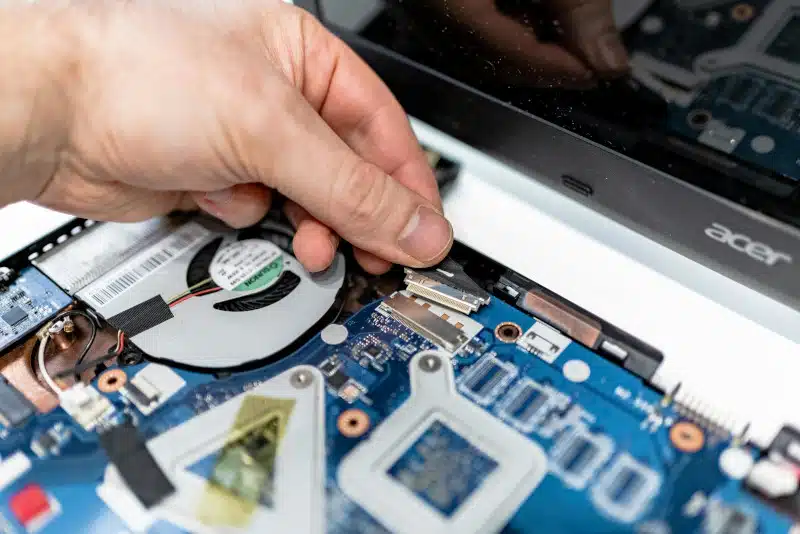My computer broke. Now what? Understanding the cause and knowing your options can save you time, money, and frustration.
Discovering that your computer has broken can be frustrating and overwhelming, especially if it’s your primary device for work or daily tasks. However, it’s important not to panic. By following a systematic approach, you can diagnose the issue and determine the best course of action. Identifying whether the issue is hardware-related or caused by a software glitch early on can help you prevent further damage and restore productivity more quickly.
My Computer Broke: Diagnose the Problem
When your computer stops working, the first step is to assess the situation. Begin by checking for simple external issues that might be causing the problem. Ensure you securely plug the power cable into the outlet and computer. If you use a laptop, check that the battery is not completely drained.
Next, examine any connected peripherals. Sometimes, a malfunctioning mouse, keyboard, or external drive can cause the computer to freeze or fail to boot. Disconnect these devices and restart the computer to see if it resolves the issue.
If the external connections are secure, consider any symptoms you noticed before the failure. Were there frequent crashes, slow performance, or error messages? Such signs often point to problems like failing hardware, overheating, or malware infections.
Error messages are especially helpful. If your computer displays one, write it down or take a photo. These codes can help narrow down the root cause, making it easier for you—or a repair technician—to address the issue.
Lastly, try a few basic troubleshooting steps. Restart your computer, as this often resolves minor glitches. If restarting doesn’t work, try booting into safe mode. This diagnostic mode only runs essential programs, helping you identify if the issue is with software or drivers.
Repair or Replace
After diagnosing the problem, the next step is deciding whether to fix it or seek professional help. You can quickly fix simple issues at home, like reconnecting a cable or replacing a dead battery. If you encounter software-related problems, such as a malware infection, you can resolve them using antivirus software or performing a system restore.
Professional assistance is usually the best option for complex hardware issues, such as a damaged motherboard or a non-functioning power supply. Attempting repairs without proper tools or expertise can worsen the damage and increase repair costs.
When consulting a technician, provide as much information as possible about the problem, including error messages, symptoms, and recent changes to your system. Providing this will help them diagnose the issue more efficiently.
It’s also essential to weigh the cost of repairs against the value of your computer. For example, replacing a hard drive or power supply might be worth it for a relatively new computer. However, replacing the computer might make more sense if your device is outdated or the repair costs are high.
Before replacing the computer, back up any recoverable data. Technicians can often retrieve important files from the hard drive even if the device isn’t fully operational. Securing your data ensures a smoother transition to a new system if needed.
Taking action promptly when your computer breaks can save you time, money, and stress. By diagnosing the problem early and deciding between repair and replacement, you’ll be well on your way to resolving the issue effectively.
If your computer broke and you’re unsure what to do next, contact PCMechanic Computer Repair in Davenport, FL, for expert assistance today!
Image Credit: Photo by IT Services EU


